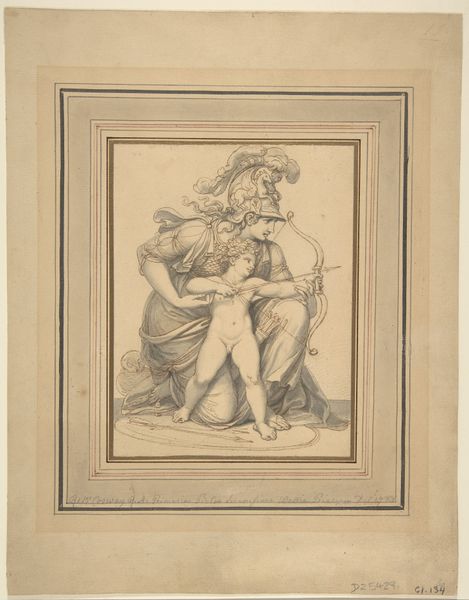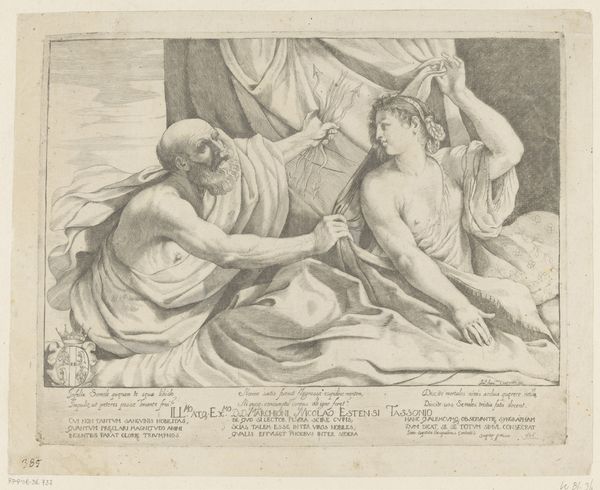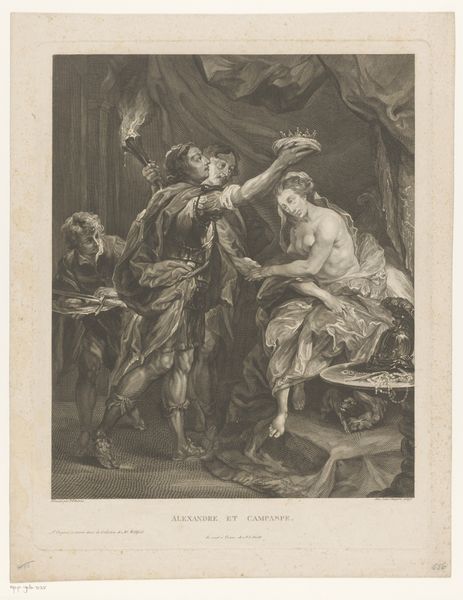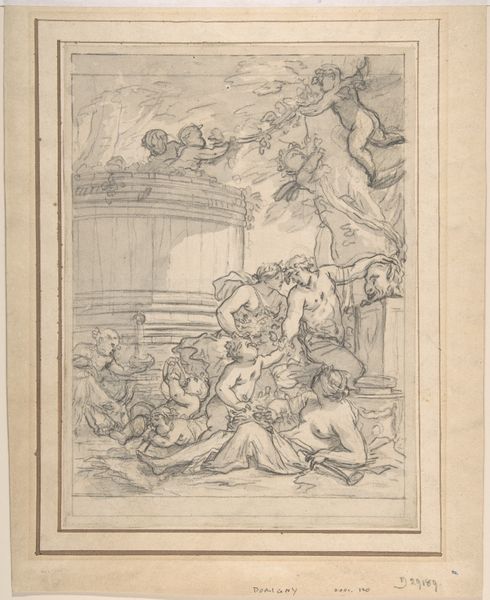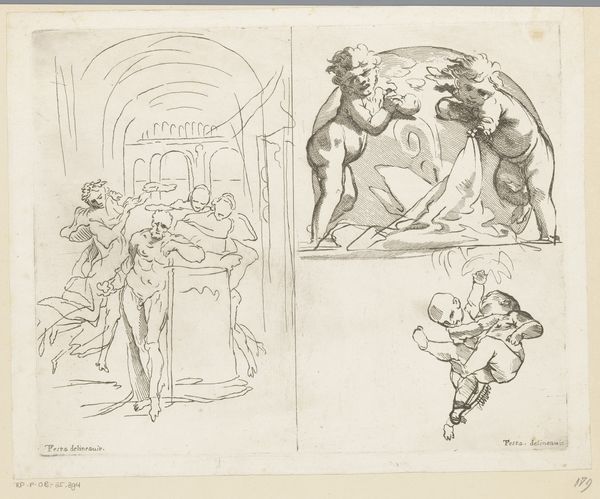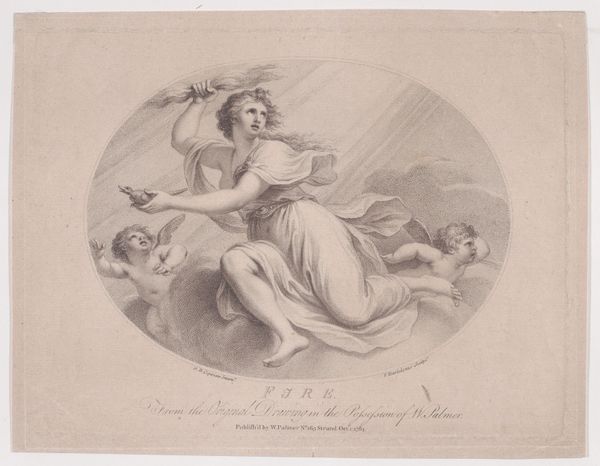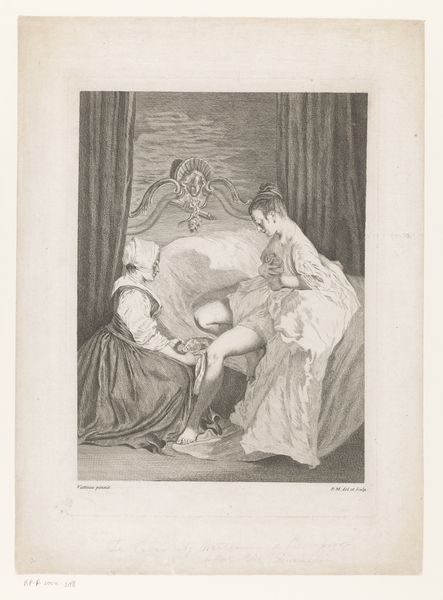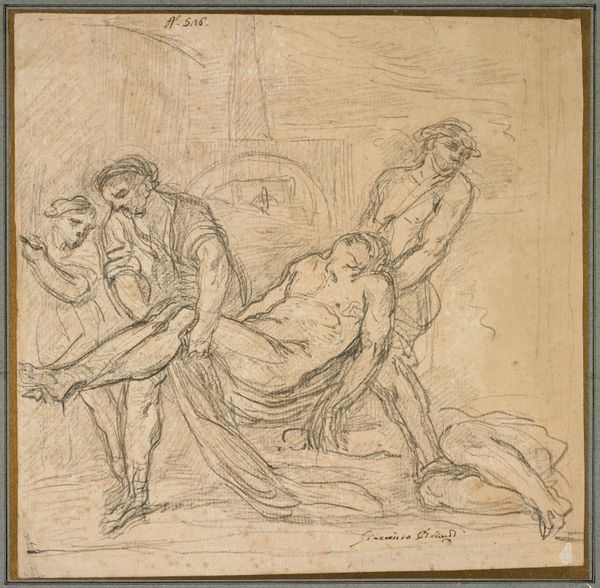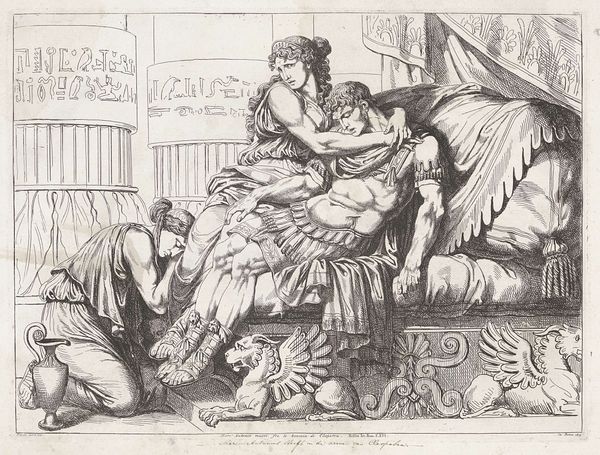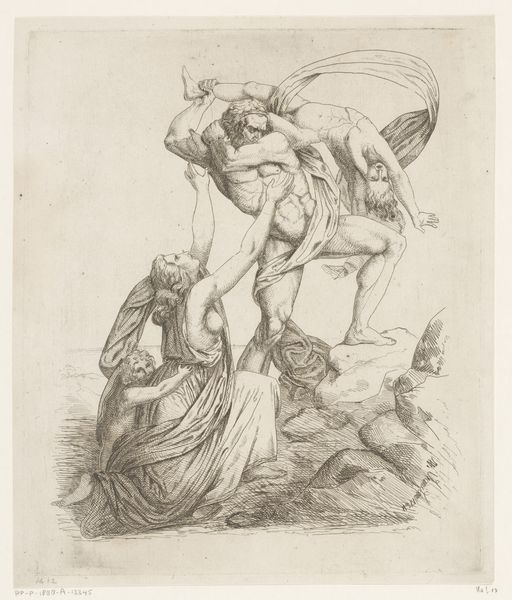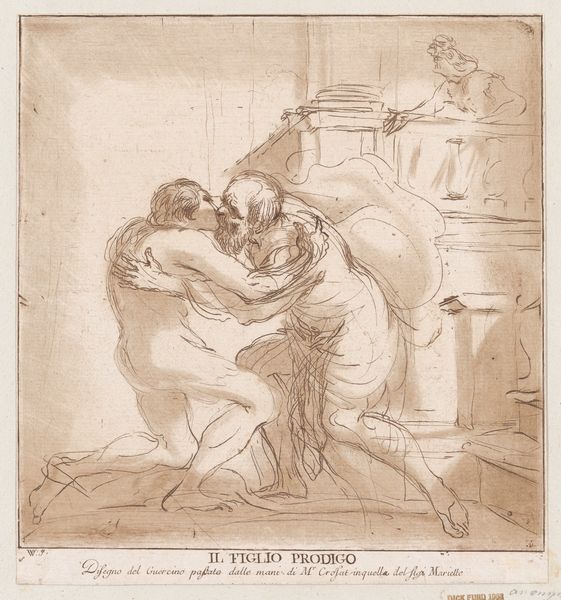
Dimensions: 225 × 181 mm
Copyright: Public Domain
Curator: Here we have "The Man Tormented by Dreams," a drawing from around 1812, attributed to the workshop of Peter Paul Rubens, rendered in graphite, chalk and ink on paper. What's your initial impression? Editor: Immediately, it feels chaotic. There's a very vulnerable figure asleep in bed, but he's surrounded by these monstrous forms attacking him. It's disturbing, this intrusion of nightmare into the domestic space. Curator: The drama is heightened by that classic baroque dynamic composition; we see muscular, twisted bodies contorting above the sleeping man, almost bursting out of the framed space. It speaks to a sense of unease prevalent in that historical moment, even if it's just a workshop study. Editor: Absolutely. The serpent is a potent symbol here; coiled around one of the tormentors, it represents temptation, hidden danger, and the unleashing of base desires. The shadowy figures looming above intensify this symbolism—they appear to be literally manifesting the sleeper’s inner demons. Curator: Consider the tradition of history painting at this time, where morality was communicated through visual allegory. The composition reflects a historical awareness of academic draftsmanship—the strong figures with bold outlining indicate his style, but they also serve to underscore the anxieties prevalent during a period of political uncertainty. Editor: The woman standing in the background too… it’s like she's an observer, perhaps representing reason or even the conscience, standing helpless as these nightmares descend. It raises the universal question of individual and public agency at play, too. Is it an unavoidable torment or something you can somehow act to combat in order to sleep peacefully? Curator: Very true! Its interesting to look closer and notice how his team would go and translate and develop some of his primary drawings or sketches to prepare them for further art work. It served as a collaborative environment as well as a learning opportunity for younger artists, who further explored various allegorical traditions prevalent then. Editor: Looking closer at that single, dark ink that has made the forms, this depiction of mental torment really shows the symbolic power an image holds. It makes you question, what kind of anxieties or demons continue to surface within your unconscious space that you need to challenge. Curator: Indeed, Rubens’s influence extends far beyond his own canvas! Editor: I concur; this artwork remains evocative and deeply human, almost in perpetuity.
Comments
No comments
Be the first to comment and join the conversation on the ultimate creative platform.
